Eurocom P5 Pro / Clevo P750ZM Review: True DTR
by Jarred Walton on March 10, 2015 10:00 AM ESTClevo P750ZM General Performance
General performance on high-end notebooks and laptops doesn’t usually add much to the performance story, but in this case we’re actually able to see what happens when we pit the fastest current mainstream desktop CPU against other mobile solutions. I’d love to have numbers from the i7-4860HQ as well as the i7-4710HQ, as that would obviously close the gap, but given the i7-4790K is priced roughly the same as an i7-4710HQ/4710MQ, you should get more bang for the buck.
Here’s a look at our standard CPU and system benchmarks, along with 3DMark for reference; WiFi performance is also included near the bottom of the page. Note that the MSI GT70 and GE60 were both equipped with hard drives for storage, so that will affect some of the PCMark results in particular.
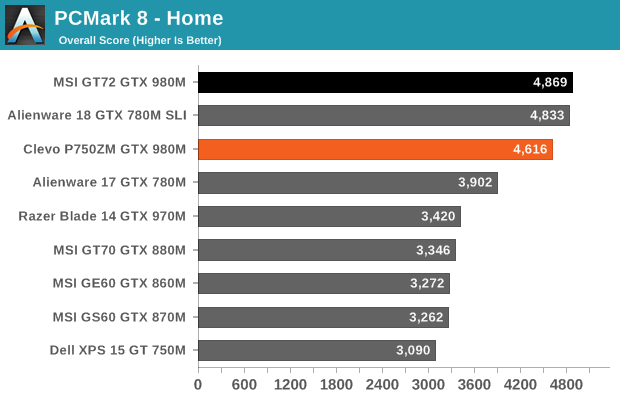

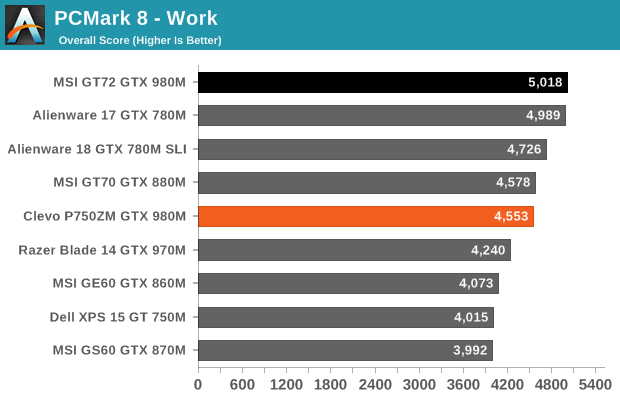
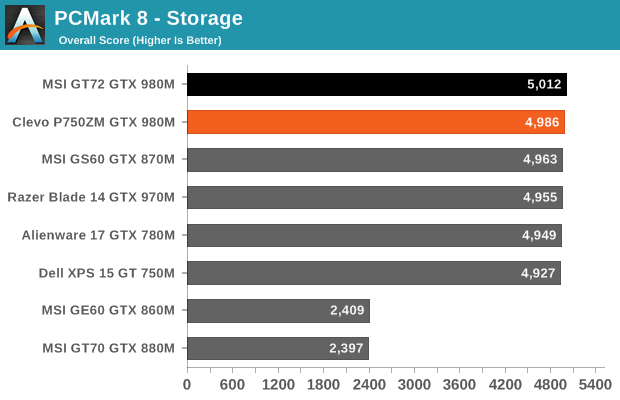
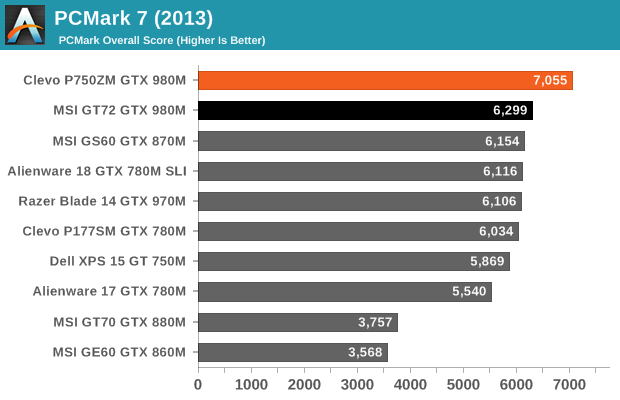


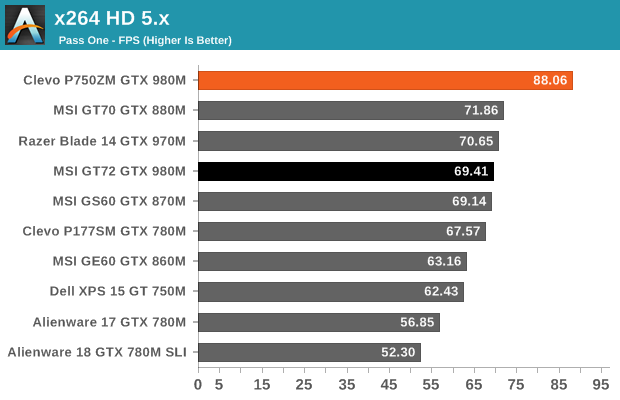
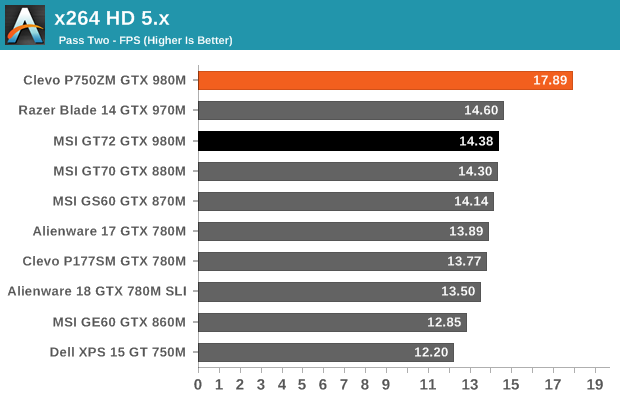
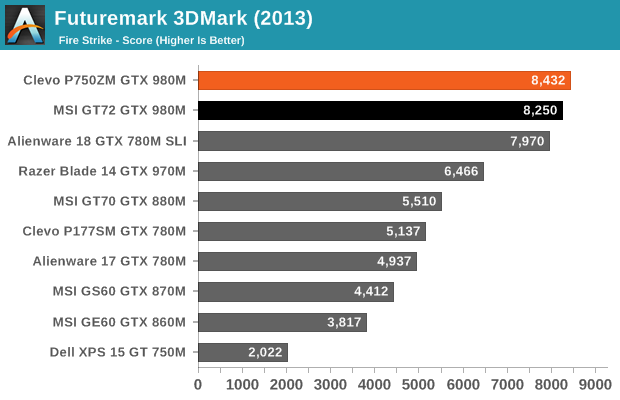
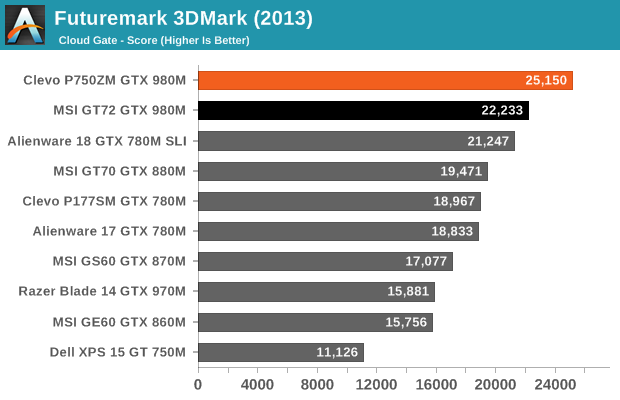
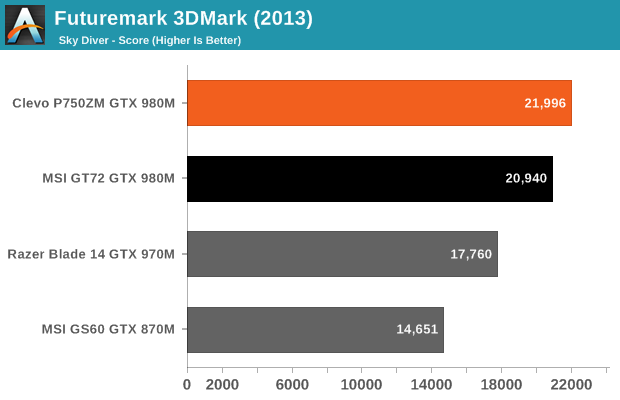
There are no surprises here: the P750ZM with a Core i7-4790K is basically the fastest notebook we’ve tested. A hex-core or octal-core LGA2011 chip could win out in multi-threaded scenarios, but that’s not really going to push gaming performance any higher, and even mobile workstations may not really need more than four cores. There are individual tests where the P750ZM doesn’t place first, but those are often influenced by other factors – e.g. faster quad-RAID SSD storage or access to Intel’s Quick Sync. When we get to CPU-centric testing, however, there’s no competition from the mobile parts; Cinebench and x264 encoding show a solid 20-25% improvement in performance over the next fastest processor.
Interestingly, in 3DMark we again see the combination of desktop CPU with GTX 980M typically outperforms the 780M SLI setup in the Alienware 18. SLI puts a heavier load on the CPU to begin with, so it makes sense that the Kepler mobile parts in SLI are unable to keep up. SLI GTX 980M would obviously change things, but we haven’t had such a system in for testing yet.
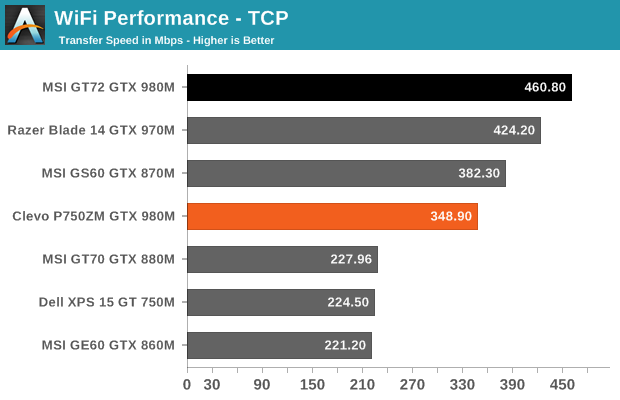
As for wireless performance, the dual-band Killer 1525 802.11ac solution worked fine during testing. We’re still not at the point where WiFi can actually outperform GbE, but for short distances we’re at least getting closer. It’s also worth mentioning that WiFi testing can be highly variable, even in the same location. Both the MSI GT72 and P750ZM used the same WiFi adapter, so either there are differences in the antenna that caused a drop in throughput or else the change in environmental conditions had an impact. This is another reason wired connections are often still desirable.










74 Comments
View All Comments
mrcaffeinex - Thursday, March 12, 2015 - link
I have the 7850K in one of my computers at home. It performs satisfactorily for everything I ask of it, including some gaming. The 7800 is a slightly neutered version of the 7850K, but has the advantage of a 1/3 power consumption reduction (less heat output being the key here). It also puts it at about 1/2 the power consumption of the reviewed unit (again, less heat being important). In this regard, if I could take it with me on the go, still do the work I need, plus entertain me when I want, it would be great.I know that mobile i5s are performance-competitive with the 7850K/7800. The market just doesn't offer a lot of options with the aforementioned mobile i5 CPU paired up with a dedicated GPU of comparable performance to the integrated GPU of the 7850K/7800 that I am aware of. The integrated GPU on the i5s, in my experience, do not offer enough performance when gaming, even if the CPU is more than adequate. AMDs mobile APUs have proven inadequate in this regard as well, at least compared to the 7850K/7800.
I would think there might be a market for a mobile solution with a desktop AMD APU. If Clevo is able to produce a cooling solution for a laptop that can dissipate the output of both a Core i7-4790K and GTX 980m, it should theoretically be possible to dissipate the heat generated by a single chip with a lower TDP than the CPU alone in the reviewed configuration. Also, last I knew, the price of a mobile i5 CPU was more than the price of the AMD APUs in question, which could make the AMD APU equipped unit cheaper than an i5 unit with dedicated GPU or offer a better quality screen/faster memory (to take advantage of the APU's iGPU) in the same price point.
Manch - Thursday, March 12, 2015 - link
Why even have a battery? I'd rather they use the space to provide better/quieter cooling. Make a sheet battery you can attach underneath it if you really want a battery for one of these. I have a GX70 and I've rarely ever had it untethered from a wall. Usually its just to power it up while I fish out the brick from my backpack so I can get to work.boeush - Thursday, March 12, 2015 - link
I, for one, do appreciate a built-in UPS. On DTR laptops, that's about all a battery is, anyway. So yeah, as long as it can provide ~30 min off the mains from full charge when new, it'd be good enough for me. Agreed, the rest of space/weight might as well be used for better cooling, or an optical drive, or something.caplus12000 - Sunday, May 24, 2015 - link
Anyone know the refresh rate of the 4K panel on this laptop? On the xotic pc website, it the samsung one claims to be running @ 60Hz, but I remember someone on a forum said they only operate at 48Hz?